The Canon C500 is an odd beast. It is Canon’s EOS Cinema lineup flagship, and the only 4K Digital Cinema Camera they manufacture. Canon’s EOS Cinema line of professional cameras targets the film industry, and was a major deal for Canon upon it’s unveiling in November 2011.
Almost three years in, it looks like it still is, with the Canon C500‘s little brother – the C300 selling well in Europe and North America. However, for some reason the C500 flagship didn’t catch quite so quick as probably Canon would have hoped.
Aside from the 1DC, which is a DSLR nonetheless, Canon haven’t really been present in the 4K acquisition market as much as Sony, Red Digital Cinema, and more recently Panasonic with their (yet to be released) 4K VariCam 35.
In the comparison chart below, we’ll compare the 4K Raw and 4K compressed recording options on the Canon EOS C500 to other popular 4K cameras such as the Sony PMW-F55 and the Red Epic-X.
In this article, I am not considering other resolutions these cameras can do such as 2K or 1080, only 4K raw/compressed. I am also comparing the least expensive options to get 4K raw out of these three cameras. Original table by Wolfcrow.
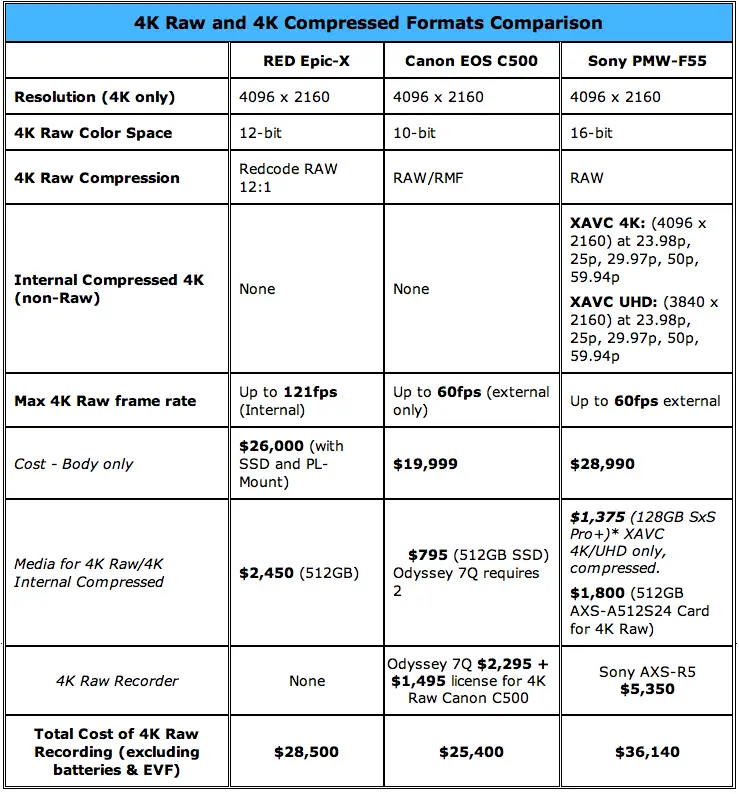
Note: I’ve excluded the Codex On Board S recorder from the above table, which can record 120fps in HALF Raw from the C500, due to it’s cost of $20,000+
Despite the C500 4K Raw package with the Odyssey 7Q costing a bit less than the Red Epic-X, the latter has the advantage in this department as it shoots on it’s own in-house developed REDCODE RAW codec in various flavours of Raw compression. However, this comes at the cost of lacking the convenience of built-in professional audio inputs, which requires an expensive add-on Audio I/O box.
The one thing that the Sony PMW-F55 and the Canon C500 lack is internal 4K Raw recording. Both cameras require expensive external recorders – with Sony offering a proprietary solution and Canon lacking their own (Codex do one, see note above). Both are compatible with the Gemini 4:4:4 4K recorder as well as the new Convergent Design Odyssey 7Q, which permits licensed recording of 4K raw on both cameras.
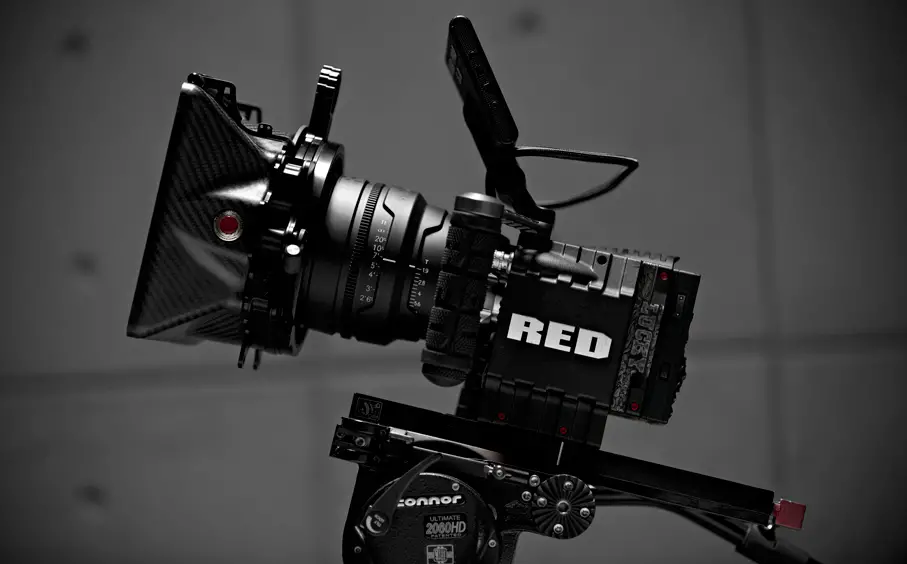
[image via www.brainfarmcinema.com]
This advantage makes the C500 and Sony-F55 maybe more versatile cameras catering to both broadcast shooters, as well as corporate, music video and high-end commercials and feature films.
The Canon C500 was more recently used in big Hollywood feature films such as the A-camera in the successful video game franchise adaptation of “Need For Speed” which was lensed by Shane Hurlbut, ASC. Here’s a “Behind the Scenes” clip from the high-octane action film showing the C500 in action.
Another big Hollywood film in recent memory, which used the Canon C500 was Martin Scorsese’s “The Wolf of Wall Street”. In this film, DP Rodrigo Prieto, used the C500 alongisde the ARRI Alexa for some areal and VFX sequences.
“Wolf of Wall Street” VFX reel via Fxguide.com
Going back to the comparison chart above, the one thing that I personally thing would place the C500 in another league is adding internal 4K recording in some flavour, not Raw, of course, as the media is not fast enough to handle it and it the camera would probably melt.
But the C500 desperately needs some sort of 4K internal recording albeit at 10-bit 4:2:2 – in some sort of variant of XAVC (like in the Sony F55) or in MXF.
The fact that you need to get an external 4K recorder for the C500 places even the rental option out for most people. Sure, the camera is aimed at higher end productions, but the more pieces of gear you need to rent/buy that’s more time on set rigging, which costs more money at the end of the day.
At the moment, the C500 can use the Codex 4K recorder, which is out of the price range for most people priced at $20,000+, so it’s a rental option for most. Another option is the AJA Ki Pro QUAD, the Convergent Design Gemini 4:4:4 and more recently the Odyssey 7Q. The last one having the advantage of acting as a really nice monitor as well.
So with that said, we hope to see some sort of an upgrade to the C500 to enable it to shoot 4K internally in some compressed format, but the likelihood of this happening are slim to none.
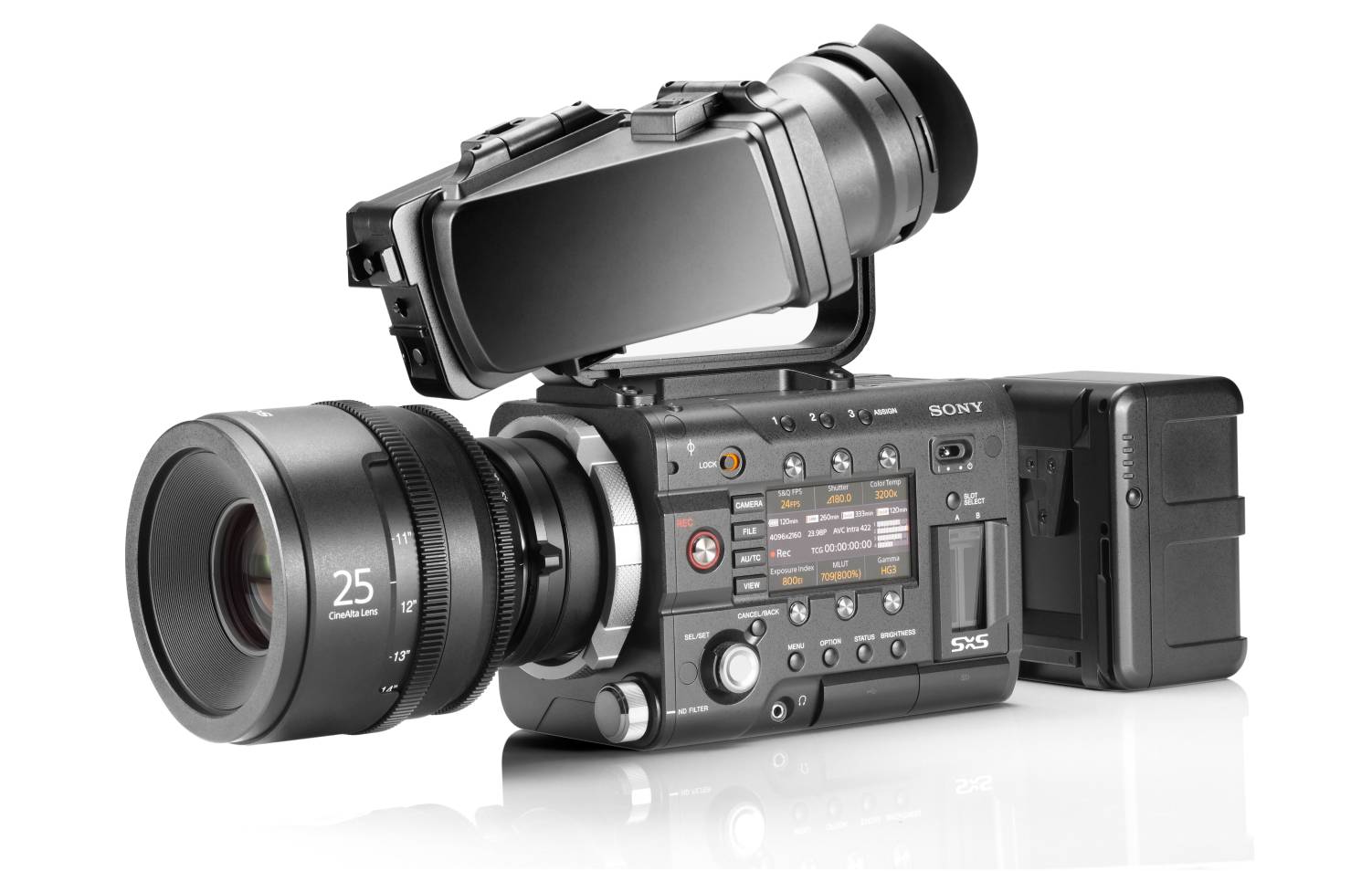
Canon would probably rather release a new camera than do this. But who knows, times are changing and only time will tell. 4K internal recording, this is where the Red Epic and Sony F55 win. Despite the fact that the Sony F55 does not record internally in 4K raw, it does record internally in both 4K and UHD in a very robust XAVC codec up to 60fps. Yes, the Sony F55 does higher frame rates in 2K, but in this post, I want to focus on 4K resolutions only. And of course, with their proprietary 4K recorder you get sublime 16-bit 4K Raw.
In summary, I think the Canon EOS C500 is a great piece of kit. Excellent colour reproduction, stable sensor, which excels in low light, but the camera needs 4K internally in order to be more competitive and get into the hands of more shooters, as it deserves that.
Check out this amazing footage via APRoductionFilms in Italy, recorded in 4K via AJA KiPro Quad on the Canon C500. Make sure you select 2,160p to view in 4K from the settings on YouTube.
[via Wolfcrow]
Disclaimer: As an Amazon Associate partner and participant in B&H and Adorama Affiliate programmes, we earn a small comission from each purchase made through the affiliate links listed above at no additional cost to you.


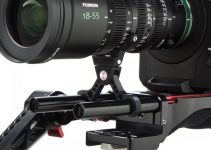
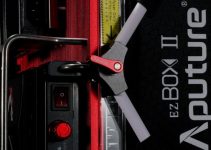
In all fairness the frame rate of the F55 should be noted to shoot 240fps in 2k raw. Since the option of HFR is what is key and the quality is secondary item not whether it can do it in 4k. Just so readers know what the camera can do. In camera the Sony can record 4k XAVC and 120FPS in XAVC HD.
Hi Bill, thanks for the comment. I’ve amended the article and gave it a refresh to make it more clear as to what I was trying to do and that is compare the 4K raw recording options on these cameras only without throwing 2K/HD into the mix. Hope it’s more clear now.